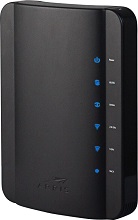Will DOCSIS 3.0 Modems Go Pay-As-You Go?

Port licensing in DOCSIS 3.0 cable modem termination systems (CMTSs) has been the norm for years as cable operators purchase the capacity they need today, with the option of lighting up more capacity down the road. According to multiple industry sources, this pay-as-you-go approach could eventually become the norm for D3 modems as well.
A similar licensing scheme appears to be under consideration for the latest generation of DOCSIS 3.0 cable modems, which are capable of bonding 16 or 24 downstream channels, with 32-channel modems capable of pushing burst speeds beyond 1 Gbps on the horizon. Most operators haven’t freed up enough channels to fully load those modems, but they’d like the option of future-proofing their modem base without paying for yet-unused capacity up front.
Channel licensing for D3 modems is just a blip, but it’s become increasingly evident that operators and vendors are starting to take a serious look at the idea, which could cause a significant shift in their business models. According to Infonetics Research’s analysis of the CMTS market in the second quarter, this pay-as-you-go model is already effecting CMTS product margins, and not in a good way, at least not if you're a vendor.
According to multiple industry sources, Arris and Time Warner Cable are discussing a proposal in which Arris would sell the operator DOCSIS 3.0 modems or gateways with the ability to bond 16 downstream channels and four upstream channels, but priced and activated as if they were configured with 8x4 settings (the Arris DG1670, pictured above, is an example of a D3 gateway that can bond 16 downstream channels). TWC would then have the option to activate the other disabled channels later in exchange for a licensing fee. The devices themselves would be upgraded with new channel-freeing firmware.
That same type of licensing scenario could conceivably also come into play as operators consider purchases of 24x8 and 32x8 D3 modems.
Arris and TWC declined to comment about financial terms tied to their commercial agreements, so it’s not clear if the proposal is tied to a larger purchase of other equipment, such as CMTS chassis or blades, and even set-tops. That, of course, could alter the economics of a modem deal that involves channel licensing.
But word of the proposal has caught the attention of DOCSIS modem vendors, and some are already starting to weigh the benefits and risks.
Multichannel Newsletter
The smarter way to stay on top of the multichannel video marketplace. Sign up below.
The benefits are obvious: you win business and move next-gen models in greater volume. But sales margins take a hit early on. And without a firm commitment for future firmware upgrades, the vendor may never realize the full value of the product. On top of that, operator DOCSIS upgrade strategies are fragmented. While some operators are expected to roll out 24x8 gear eventually, some might skip 16/4 and 24/8 D3 modems altogether and focus on DOCSIS 3.1.
Some suppliers are not convinced that the model makes financial sense. “There’s definitely a challenge to overcome from a capex perspective,” said an exec with one DOCSIS modem vendor. Even if a core 16/4 DOCSIS chip were to cost two times that of an 8x4, other incremental costs factor into the overall bill of materials, including a larger case, a bigger heat sink, and, if they are D3 gateways, Wi-Fi chips.
Read more analysis and reactions to this budding trend will be covered in the September 9 issue of Multichannel News.
